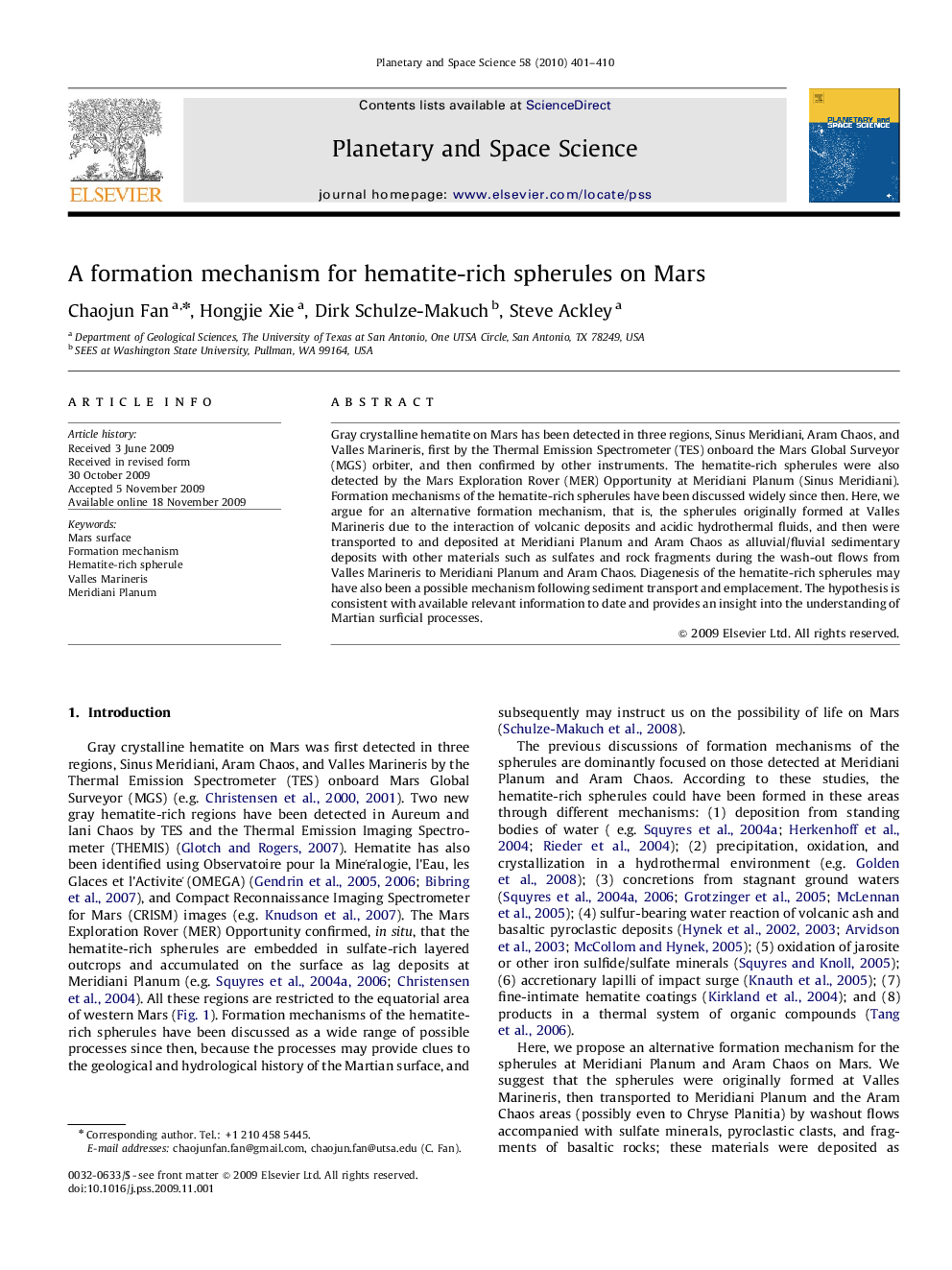| Article ID | Journal | Published Year | Pages | File Type |
|---|---|---|---|---|
| 1782179 | Planetary and Space Science | 2010 | 10 Pages |
Abstract
Gray crystalline hematite on Mars has been detected in three regions, Sinus Meridiani, Aram Chaos, and Valles Marineris, first by the Thermal Emission Spectrometer (TES) onboard the Mars Global Surveyor (MGS) orbiter, and then confirmed by other instruments. The hematite-rich spherules were also detected by the Mars Exploration Rover (MER) Opportunity at Meridiani Planum (Sinus Meridiani). Formation mechanisms of the hematite-rich spherules have been discussed widely since then. Here, we argue for an alternative formation mechanism, that is, the spherules originally formed at Valles Marineris due to the interaction of volcanic deposits and acidic hydrothermal fluids, and then were transported to and deposited at Meridiani Planum and Aram Chaos as alluvial/fluvial sedimentary deposits with other materials such as sulfates and rock fragments during the wash-out flows from Valles Marineris to Meridiani Planum and Aram Chaos. Diagenesis of the hematite-rich spherules may have also been a possible mechanism following sediment transport and emplacement. The hypothesis is consistent with available relevant information to date and provides an insight into the understanding of Martian surficial processes.
Related Topics
Physical Sciences and Engineering
Earth and Planetary Sciences
Geophysics
Authors
Chaojun Fan, Hongjie Xie, Dirk Schulze-Makuch, Steve Ackley,
